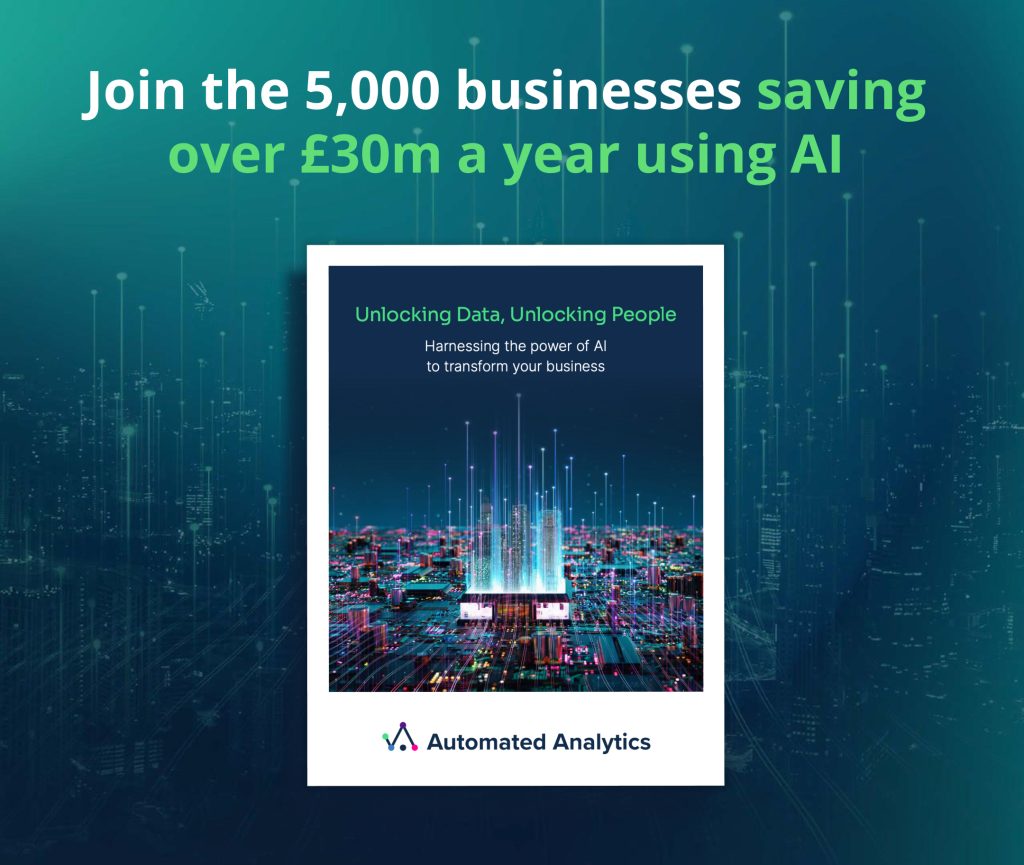How can businesses ‘make friends’ with AI?

Our new White Paper, ‘Unlocking Data, Unlocking People’ revealed the US is stealing the march on the UK in AI adoption, with trust and risk aversion holding business back.
How can UK businesses ‘make friends’ with Artificial Intelligence?
Overcoming reservations about embracing AI may well require a shift in mindset, as well as a greater understanding of its potential benefits. As always, education has a crucial role to play in dispelling misconceptions and building confidence. Business leaders tasked with overseeing the introduction of AI into their organisation should focus on highlighting real-world examples of successful AI implementations and the tangible advantages these have brought. These include improved efficiency, productivity, and decision-making. In addition, emphasising the inherently collaborative role of AI, where human expertise is augmented by machine intelligence, can help alleviate concerns about job displacement and underscore AI’s value as a tool for innovation and competitive advantage. By fostering a culture of curiosity, adaptability, and continuous learning, it should be possible to persuade organisations, management and workforce to embrace AI with confidence, and harness its transformative power to drive growth and success.
Setting aside bias
Personal bias and preconceptions will frequently hinder business decision-making, not only in the interpretation of data, but especially when it comes to embracing new technologies like AI. It is essential to recognise that what may align with personal preferences or familiar practices may not be what’s best for an organisation in terms of innovation and growth. Implemented well, AI can provide objective insights and data-driven solutions that bypass personal biases and lead to more effective decision-making processes. By prioritising needs and objectives over individual preferences, an organisation can leverage AI to optimise operations and recruiting, enhance customer experiences, and stay ahead of its competitors. A mindset of openness and adaptability, and a commitment to evidence-based decision-making are all that is required to mitigate the influence of personal bias and ensure that business strategies are guided by what is most beneficial for long-term success.
Recognising the potential of AI.
Mapping profit potential against risk can provide a useful framework for organisations seeking to assess opportunities to deploy AI solutions to aid the analysis and interpretation of their data. Imagine a typical BCG (Boston Consulting Group) matrix charting risk on its x-axis against profit on the y-axis. High-profit, low-risk scenarios map to the upper-left quadrant, indicating favourable conditions for implementing AI solutions. Conversely, initiatives with low-profit potential and high-risk exposure are situated in the lower-right quadrant, warranting careful consideration or avoidance. This tool makes it simple for organisations to prioritise those investments in AI that align with their strategic objectives while avoiding potentially costly initiatives with low ROI.
The opportunity to seize advantage
Competitive advantage can manifest itself in many forms. Cost leadership, differentiation, innovation and agility are all areas in which advantage may be gained – or conceded. When building a case for adoption of AI within an organisation, parallels can be drawn with other advances that initially faced resistance or uncertainty, quickly to become ubiquitous in the business landscape. The adoption of e-commerce revolutionised retail operations is allowing companies to reach a broader customer base and streamline transactions. Yet for many established retailers, its advent was greeted with scepticism and hostility. Similarly, the shift towards Cloud computing, in the face of lethargy and nay-sayers in both the IT industry and end-user organisations, transformed IT infrastructure management, offering scalability, flexibility, and cost-efficiency. Despite initial scepticism, these innovations became essential components of business strategies, providing competitive advantage to early adopters. Today, it is AI that holds the potential to reshape sectors and the businesses within them by optimising processes, predicting trends, and enhancing decision-making capabilities. Embracing AI as a strategic tool for innovation and growth will position early-adopting businesses at the forefront of their respective industries, driving sustainable competitive advantage.